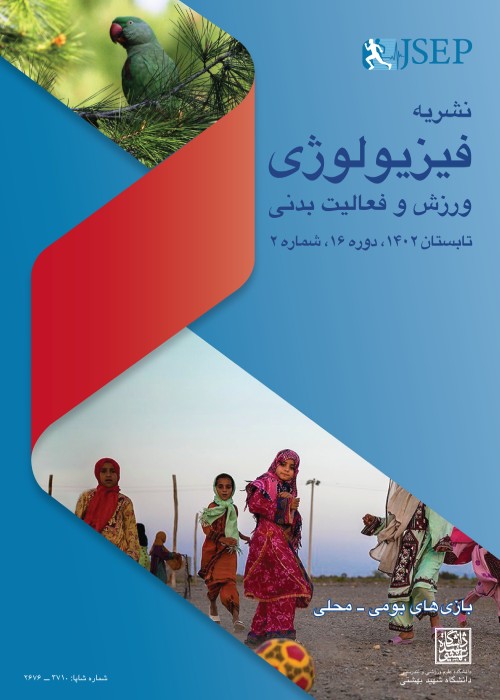Effect of involuntary and voluntary exercise in an enrichment environment on astrogliosis reaction of hippocampus white matter in type 3 diabetic rat models
Alzheimer's disease (AD) is associated with decreases in neurons in several important areas for memory and learning in the brain, especially in the hippocampus. AD is a progressive brain disorder that causes gradual loss of memory, impaired learning ability, and connection problems with other people. Researchers have found that people with diabetes are 1.5 times more likely to develop AD. And suggests that Alzheimer's disease may indicate a specific type of diabetes in brain. Although this issue needs more research. Astrocytes are one of the most abundant types of glial cells that change and become hypertrophy in response to any damage to the central nervous system (CNS). An important feature of the glial reaction is the increased synthesis of GFAP protein, which is a protein that mediates cytoskeletal fibers and is the main determinant of the reactivation of astrocytes and cell damage. This phenomenon is known as the astrogliosis reaction and is one of the most common injuries in type 3 diabetes and AD. White matter changes in the hippocampus are one of the best biomarkers for recognizing the progression of Alzheimer's disease.
Twenty-five rats were randomly divided into five groups: 1-type 3 diabetes group (DM III), 2-healthy control group (Control), 3-type 3 diabetes and involuntary training (DM III + HIIT), 4-type 3 diabetes and voluntary activities in an enriched environment group (DM III + RE), and 5-the sham group (Sham). The activity method of the rats in the involuntary training group was performed as high intensity interval training and in accordance with the test of maximum training capacity by Wang et al. The rats of the voluntary training group were placed in the enriched environment for five days a week for two hours a day and simultaneously with the activity of the involuntary training group. GFAP was measured by DAB immunohistochemical method. Morris water maze test was used to evaluate spatial learning and memory of animals. Shapero-Wilk test was used to measure the normal distribution of data. One-way ANOVA and Tukey post-hoc test with a significance level of 5% was used to analyze the data. Statistical calculations were performed by GraphPad Prism software version 8, SPSS version 21, and Microsoft Excel software version 2010.
The present study results showed that the type-3 diabetes control group had the highest amount of GFAP expression. This difference with all the research groups was statistically significant (P ≤ 0.05). The voluntary exercise group in the enriched environment and the involuntary exercise group had significantly lower GFAP than the type-3 diabetes control group. The voluntary exercise group had a lower GFAP expression percentage (23.67%) than the involuntary training group (26.01%). However, the difference between these two training groups was not statistically significant (P > 0.05). The Morris water maze test showed that the healthy control and sham groups spent more significant time in the target area and this difference was statistically significant only with the type-3 diabetes group (P ≤ 0.05). Both exercise groups spent more time in the target area than the type-3 diabetic group, but this difference was not statistically significant (P > 0.05). The voluntary exercise group spent more time in the target area and this group performed better in remembering information and spatial memory than the involuntary exercise group. Still, this difference was not statistically significant (P > 0.05).
Voluntary group activities in an enriched environment may have greater effects in reducing GFAP in the hippocampus white tissue of the diabetic type 3 rats. However, involuntary high-intensity interval training was also able to reduce the astrogliosis reaction compared to the diabetic type 3 control group. The voluntary exercise group in the enriched environment performed better in the Morris water maze test than the involuntary exercise group so the time spent in the target area quadrant by them was higher than the involuntary high-intensity exercise group.
Alzheimer's disease , GFAP , HIIT , Astrocyte
- حق عضویت دریافتی صرف حمایت از نشریات عضو و نگهداری، تکمیل و توسعه مگیران میشود.
- پرداخت حق اشتراک و دانلود مقالات اجازه بازنشر آن در سایر رسانههای چاپی و دیجیتال را به کاربر نمیدهد.



